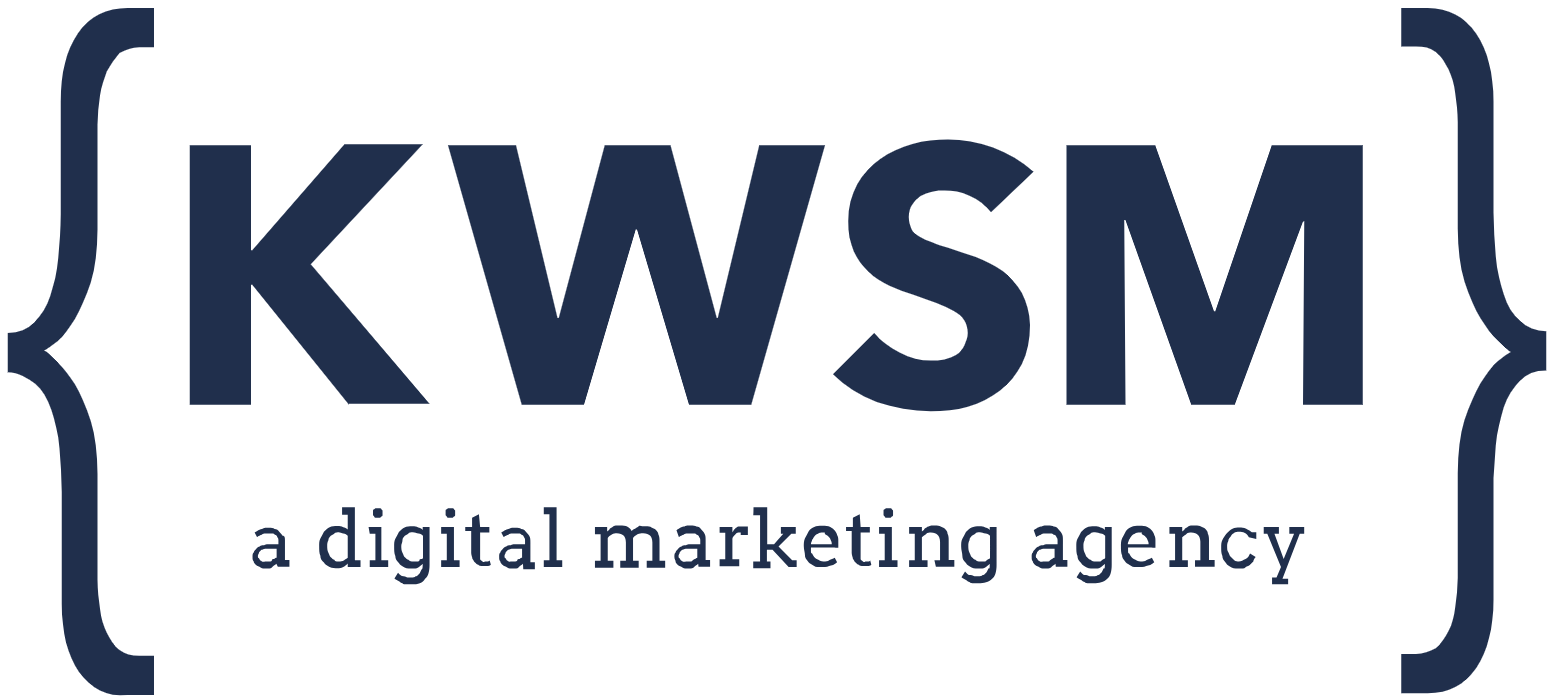
How do you identify the goals of a digital marketing strategy?
Setting and pursuing goals is often the biggest difference between successful digital marketing campaigns and struggling to make an impact.
To put it another way, your marketing efforts will be chaotic and ineffective if you don’t identify the goals of your digital marketing strategy first. But when you take the time to pin down your marketing goals and align them strategically with your business goals, you can achieve remarkable success.
As an industry-leading marketing agency since 2010, the KWSM team often gets to witness the transformative impact of a goal-oriented approach firsthand. This strategic execution, carried out by our team of more than 40 in-house professionals, has consistently helped hundreds of businesses across various industries achieve world-class marketing results.
We’ll unlock the true potential of your digital marketing strategy by helping you identify goals that will generate the best results for your business.
3 Ways to Identify the Goals of Your Digital Marketing Strategy
Setting clear goals provides your marketing efforts with purpose, direction, and a framework for measurable results. This also allows you to prioritize your resources, target the right audience, and make data-driven decisions that optimize your digital presence.
This post will cover the value of knowing your target market, researching market trends, and using data to establish measurable goals within a successful digital marketing strategy.
1. Prioritize Business Objectives
Your digital marketing goals should align with your overall business objectives. Determine the key outcomes you want to achieve, such as increasing brand awareness, improving customer retention, boosting online sales, or driving leads.
To illustrate, let’s say your number one business objective is to increase leads. How will you do that? By setting measurable marketing goals, such as generating a specific number of qualified leads per month. Specifying what your business needs will provide a more effective roadmap to achieve your larger objectives.
Further, by defining even more specific goals, such as increasing website traffic by a certain percentage, improving conversion rates by a specific amount, or implementing lead nurturing campaigns to increase qualified leads, businesses can focus their efforts and track tangible progress toward the desired results.
“I’ve seen the results of marketing campaigns that don’t have a strategy to guide them at other agencies and organizations. (Spoiler alert: they aren’t great.) Clearly defining the goals of your digital marketing strategy is essential. If you don’t define success for your strategy and campaigns, you can’t measure performance effectively, which means you can’t improve.”
Kyle Cavaness, Senior Copywriter & Brand Messaging Strategist, KWSM
Use Data and Analytics
Leveraging data and analytics is an integral part of setting measurable goals. Analyze key metrics such as website traffic, conversion rates, engagement levels, and social media insights to gain valuable insights into your digital marketing performance.
These insights will guide you in establishing Specific, Measurable, Attainable, Relevant, and Time-bound (SMART) goals for your digital marketing strategy.
A Goals-Driven Case Study
One of our clients at KWSM decided to incorporate online advertising into their business-to-consumer (B2C) strategy for lead generation. Their initial objective was to achieve a 20% increase in online sales within a year. To assess their progress, we diligently tracked and monitored their website analytics and other key performance indicators (KPIs).
After a few months, we discovered a significant increase in website traffic from mobile devices, indicating a growing trend among their target audience. We also observed that a large percentage of visitors abandoned their shopping carts without completing a purchase – a common problem for online sellers.
Armed with these insights and our recommendations, our client decided to shift their goals. They revised their primary objectives to improve mobile conversion rates and reduce cart abandonment. To achieve this, they set specific, measurable goals, including:
- Increasing mobile conversion rate by 15% within the next three months.
- Decreasing cart abandonment rate by 20% within the same period.
With these new goals in mind, KWSM implemented several strategies:
- Mobile Optimization: Enhance their mobile website experience and streamline the checkout process.
- Remarketing Campaigns: Reach out to users who had abandoned their carts with personalized offers, incentives, and reminders to complete their purchases.
- User Experience Enhancements: Conduct customer feedback to identify pain points in the purchase journey. Based on this, we made improvements to the website navigation, product descriptions, and visual elements to increase engagement and trust.
Our client successfully achieved their revised goals by monitoring their analytics consistently and making data-driven decisions. Their mobile conversion rate increased by 18% within three months, and they managed to reduce cart abandonment by 25%. As a result, they exceeded their initial sales goal and also improved their overall customer experience and brand reputation.
By regularly analyzing key metrics, businesses can uncover valuable insights, adapt their strategies, and set measurable goals that directly address areas of improvement, leading to improved performance and business growth.
Set Realistic and Measurable Goals
When defining your digital marketing goals, it is essential to set realistic and measurable targets.
Your goals should include specific numbers, such as increasing website traffic by 20% within six months or acquiring 500 new email subscribers over the next quarter. This will help you track progress, evaluate the success of your strategy, and make appropriate adjustments when necessary.
Benefits of Realistic and Measurable Goals
- Clarifies what you want to achieve
- Improves focus on your objectives
- Creates a sense of motivation and accountability (because they are tangible and actionable)
- Helps you allocate resources – both in terms of time and budget
- Contributes directly to the success of your business
Identify the Goals of Your Digital Marketing Strategy
In summary, identifying the goals of your digital marketing strategy is crucial for developing a successful online presence.
By prioritizing business objectives, using data and analytics, and setting realistic and measurable goals, you can create a powerful digital marketing strategy that drives tangible results for your business.
Finally, remember that digital marketing is an ongoing process. so continuously monitor and measure your performance, adapt to changes, and refine your goals accordingly.

Companies with well-defined marketing goals are 429% more likely to report success than those without clearly defined goals. (HubSpot)
KWSM – Your Digital Marketing Strategy Team
Ready to achieve your digital marketing goals? Let our experienced team guide you in identifying and achieving your digital marketing goals. Whether you need assistance with social media marketing, search engine optimization, content creation, or overall strategy development, we are here to help your business succeed. Fill out the form below to start maximizing your online presence.










